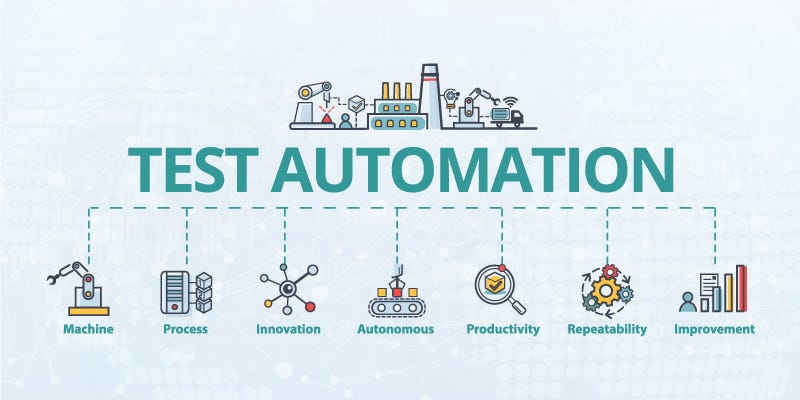Automation Testing Structures: Simplifying Complicated Testing Scenarios
Automation Testing Structures: Simplifying Complicated Testing Scenarios
Blog Article
From Handbook to Automated Testing: A Comprehensive Guide to Transitioning Smoothly and Effectively
In the realm of software program testing, the change from handbook to automated procedures has ended up being an increasingly essential change for companies looking for to enhance effectiveness and precision in their testing techniques. The journey from guidebook to automated testing is not without its difficulties, yet when approached purposefully and with a clear plan in mind, the advantages can be significant.
Benefits of Automated Examining
Automated testing supplies numerous benefits, enhancing effectiveness and precision in software advancement procedures. One primary benefit is the substantial decrease in testing time. Automated tests can be run simultaneously on several tools and running systems, drastically accelerating the screening stage contrasted to manual testing. This raised efficiency enables for faster comments on the top quality of the software, allowing programmers to identify and deal with problems quickly.
Additionally, automated testing guarantees a greater degree of accuracy in spotting issues. Uniformity in testing is also boosted, as automated examinations perform the same actions exactly each time they are run.
Selecting the Right Devices

Firstly, assess your objectives and requirements. Recognize the scope of your job, the technologies included, and the ability set of your team. This evaluation will help you figure out the functions and abilities you call for in your testing devices.
Second of all, think about the compatibility of the tools with your existing systems and processes. Seamless combination with your existing software program advancement lifecycle is necessary to make certain a smooth transition to automation.
In addition, examine the scalability and flexibility of the devices. As your screening requires progress, the tools need to be able to adapt and fit changes properly.
Finally, factor in the assistance and neighborhood around the devices. When carrying out automated screening, robust assistance and an active customer community can give important sources and assistance. By meticulously thinking about these facets, you can select the right devices that straighten with your demands and established the stage for a successful change to automated testing.
Composing Reliable Examination Scripts
When crafting examination manuscripts, it is necessary to consider the details requirements of the software program being evaluated and make certain that the scripts attend to all crucial capabilities. Clear and descriptive calling conventions for test manuscripts and test situations can boost readability and maintainability. Additionally, integrating mistake handling mechanisms within the test manuscripts can help in determining and resolving issues quickly.
In addition, organizing test browse around these guys manuscripts right into modular components can enhance reusability and scalability, reducing redundancy and improving performance in examination script maintenance. Routine testimonials and updates to examine scripts are critical to keep pace with progressing software application demands and capabilities. By following these principles, testers can produce reliable and durable examination scripts that contribute considerably to the success of automated testing processes.
Integrating Automation Into Workflows
Effective combination of automation devices right into existing workflows improves processes and improves efficiency within software application growth cycles. When including automation right into operations, it is critical to identify repetitive tasks that can be automated to save time and reduce human error. By seamlessly incorporating automated screening tools like Selenium or Appium right into the visit here software development lifecycle, teams can attain faster comments on code modifications, causing quicker insect detection and resolution. This integration allows for continual screening throughout the advancement process, guaranteeing that any issues are recognized early, leading to higher software program top quality. Furthermore, automation can be utilized to trigger examinations immediately after each code commit, providing prompt validation and liberating testers to concentrate on more complex circumstances. Appropriate integration of automation devices needs collaboration in between development, screening, and procedures teams to establish a unified operations that enhances efficiency and performance in providing premium software items.
Making Certain a Smooth Transition
Effectively transitioning to automated screening involves thorough planning and cautious implementation to minimize interruptions and make the most of effectiveness in the software program growth procedure - automation testing. To ensure a smooth shift, it is crucial to start by conducting a complete assessment of the current testing processes and determining areas where automation can bring the most considerable advantages. Involving with all stakeholders early in the procedure, consisting of designers, testers, and task supervisors, is vital for gathering assistance and buy-in for the automation effort
Communication is essential during this transition stage. Clear interaction of the objectives, advantages, and assumptions of automated testing helps to manage any resistance or concerns that might emerge. In addition, giving ample training and sources for employee to upskill in automation tools and strategies is crucial for making sure an effective shift.

Conclusion
Finally, transitioning from handbook to automated screening supplies countless advantages, link consisting of increased efficiency and reliability. By choosing the proper devices, writing effective test scripts, and incorporating automation seamlessly into workflows, organizations can guarantee a effective and smooth shift. It is crucial to embrace automation as a valuable property in software program screening procedures to enhance general high quality and performance.
In the realm of software application testing, the shift from guidebook to automated procedures has ended up being a progressively crucial shift for organizations seeking to enhance performance and precision in their testing practices. Automated tests can be run simultaneously on numerous tools and running systems, significantly speeding up the testing phase contrasted to hands-on screening. Uniformity in testing is additionally enhanced, as automated tests implement the very same steps precisely each time they are run.To make sure the successful execution of chosen testing devices, the creation of reliable test manuscripts plays an important role in confirming the functionality and efficiency of automated processes - automation testing. By adhering to these principles, testers can develop efficient and durable test manuscripts that contribute substantially to the success of automated testing procedures
Report this page